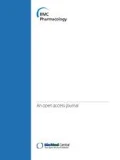It is known that certain spices are rich in antioxidants. Sumac (Rhus coriaria) is widely consumed in Middle-Eastern countries. We tested its DNA-protective effects in a human intervention trial. Eight participants consumed 3 g of sumac for 3 days. We found strong protective effects in single cell gel electrophoresis assays (SCGE) with endonuclease III (ENDO III), formamidopyrimidine glycosylase (FPG) and hydrogen peroxide in human peripheral lymphocytes. H2O2-induced DNA migration was reduced by 30%, oxidized pyrimidines 36% and oxidized purines 41%, respectively, after the intervention. Subsequent in vitro experiments indicated that gallic acid (GA) is the active principle of sumac. GA is also contained in certain plants (mango, rhubarb, strawberries). In a subsequent trial, 8 participants consumed GA (0.2 mg/kg BW/d) for 3 days and strong protective effects were observed with this phenolic compound which is very rapidly absorbed in the GI tract. The reduction of DNA migration induced by H2O2 was 40%, ENDO III 58%, FPG 52%. Comparisons show that GA is 50 times more protective than the vitamins C and E. The protective effects of sumac and GA were also investigated in animal experiments. Eight male rats per group were fed 3 days with sumac (0.02 g/kg BW/d) and GA (0.2 mg/kg BW/d). After irradiation in a 60Co source (7.74 Gy/1 min), the animals were killed immediately and protective effects were seen in lymphocytes, brain, liver, colon and lung. Taken together, our findings indicate that GA is a "super-antioxidant" which protects against ROS-induced DNA-damage.
Author information
Authors and Affiliations
Corresponding author
Rights and permissions
Open Access This article is published under license to BioMed Central Ltd. This is an Open Access article is distributed under the terms of the Creative Commons Attribution License ( https://creativecommons.org/licenses/by/2.0 ), which permits unrestricted use, distribution, and reproduction in any medium, provided the original work is properly cited.
About this article
Cite this article
Ferk, F., Chakraborty, A., Simic, T. et al. Antioxidant and free radical scavenging activities of sumac (Rhus coriaria) and identification of gallic acid as its active principle. BMC Pharmacol 7 (Suppl 2), A71 (2007). https://doi.org/10.1186/1471-2210-7-S2-A71
Published:
DOI: https://doi.org/10.1186/1471-2210-7-S2-A71

